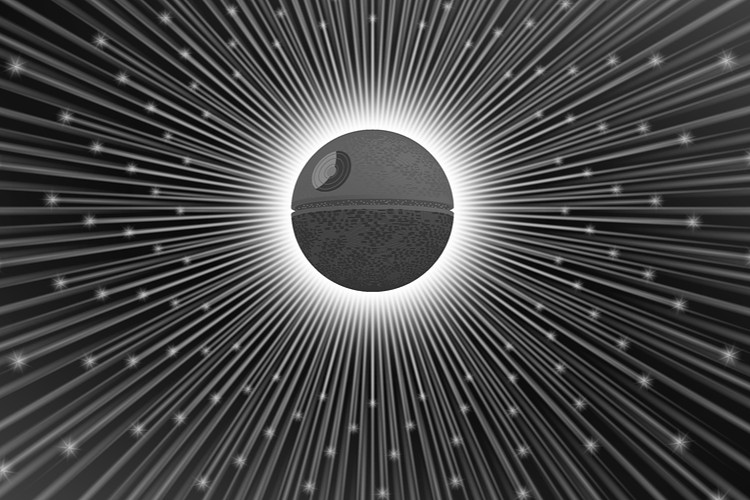From the smallest land speeders to the largest Star Destroyers, everything needs a means of propulsion. The Death Star is no exception, yet it appears to lack the powerful thrusters we’re used to seeing!
Whichever source it uses, it must be powerful. But the questions remain:
How did the Death Star move around, and could it travel through hyperspace?
What Engines Did the Death Star(s) Use?
Because the second iteration of the Death Star differed from the first, this answer will be split into two parts.
The First Death Star (DS-1)
Before its destruction, the first Death Star used sublight engines to move around within star systems.
The starship company Kuat Drive Yards (KDY) produced 123 of these engines for the battle station. Notably, KDY was well-known for making many of The Empire’s fearsome battleships.
The Second Death Star (DS-2)
After the destruction of the first Death Star, The Empire began working on its replacement — the DS-2.
Although they fitted the new battle station with many ion engines, their construction was still incomplete when the Battle of Endor took place.
What Speed Did the Death Star(s) Travel At?
Unfortunately, as of writing this, there is no concrete figure for either of the Death Stars’ sublight speeds. There are too many types of sublight engines, and most do not have their power/output listed.
It is, however, safe to assume that the first Death Star would have moved slowly due to its mass.
The second Death Star lacked functional engines, which gives us a clear-cut answer of “0 kilometers per hour.”
Could the Death Star(s) Jump Into Hyperspace?
In short, the first Death Star could jump to hyperspace, but the second one couldn’t. Here’s why!
The DS-1’s Hyperdrive
The DS-1 had two hyperdrives: a Class 4 primary, and a Class 20 backup.
Although there is little information on the exact speeds for hyperdrive classes, we know how they compare to each other!
The baseline for all hyperdrives is a Class 1. Speed is ranked in a reversed ranking system: a Class 0.5 is twice as fast, a Class 2 is half as fast, and so on.
For example: the X-wings which destroyed this Death Star had Class 1 hyperdrives. Thus, the Death Star would’ve been four to twenty times slower than an X-wing in hyperspace!
The DS-2’s (Nonexistent) Hyperdrive
Given that the DS-2 had an incomplete sublight engine system, it’s not surprising that it also lacked a working hyperdrive.
This does make sense, though, as the DS-2 primarily existed to lure the Rebellion to Endor — why install a hyperdrive when it’s being used as bait?
How Did the First Death Star Travel Through Hyperspace?
Like any other starship with a hyperdrive, the first Death Star travelled between star systems via hyperspace.
To do so, the hyperdrive rips open space-time, allowing the ship to travel through (some even say that hyperspace is a different dimension altogether!)
Conclusion
The first and second Death Star (the DS-1 and DS-2, respectively) had different purposes, and were therefore constructed differently.
The DS-1 had an array of sublight engines for moving through systems. For moving between systems through hyperspace, it was equipped with a Class 4 (primary) and Class 20 (backup) hyperdrive.
On the other hand, the DS-2 lacked any kind of propulsion — sublight or otherwise. Because of this, it was practically immobile and could not travel.

